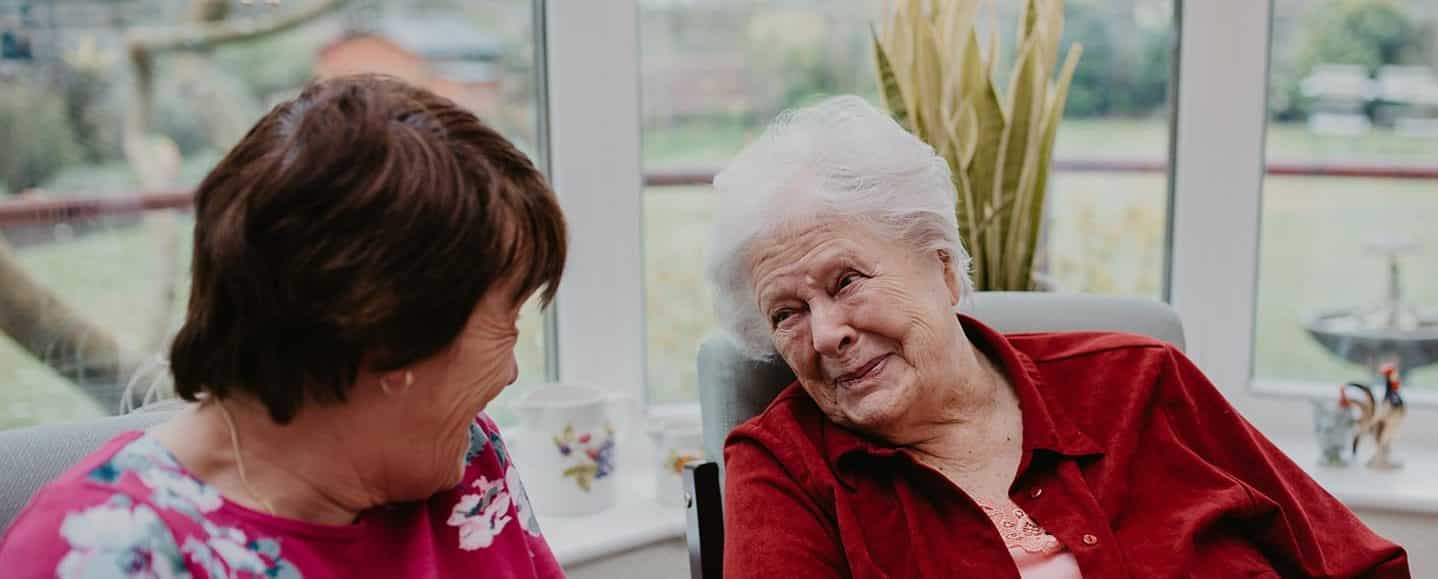Live-in care has been gaining popularity. But why is that, and how does live-in care differ from care homes or home care?
What does 24-hour live-in care mean?
If you are looking for care for a fiercely independent family member, live-in care could be just the ticket. With traditional home care a care worker would come into their home at agreed times, to support them with personal care, say. But that means that there’d be periods of time when they’d be alone in the house.
With live-in care a care worker would come to live with your family member, giving them dedicated one-to-one support seven days a week, in the comfort of their own home.
Having a care worker in the house all time has guaranteed consistent and uninterrupted 24-hour care at home for our live-in care clients during the pandemic.
The benefits of live-in care
Your family member carries on living at home, which means they can keep your normal routine, as much as possible (depending on any national restrictions at the time). Just because they need care and support, it shouldn’t mean they have to give up choice about how they spend their time.
One of the other major benefits of live-in care is the peace of mind it brings families, knowing there’s always someone on hand, especially during the night.
Live-in care for people living with dementia
Live-in care can work particularly well for people living with dementia. Remaining in their own home – an environment that’s familiar to them – can help them feel safe.
What live-in care services might a care worker provide?
Exactly how a care worker supports your family member will depend on their particular level of need. What we can say is that it will be a bespoke package of care, designed for specifically for them.
Their live-in care worker could help them get dressed in the morning, do their shopping, feed pets, or drive them to medical appointments. It all depends on your family member, because everyone is different.

Is live-in care simply 24-hour homecare?
Live-in care is more than 24-hour home care. Many of our live-in care workers become part of the family, accompanying those they care for on holiday and attending family celebrations.
Because the care worker would be living in your family member’s house, spending weeks at a time there, they’d need their own space in the house. This would typically be their own bedroom, with somewhere for their clothes and some possessions.
How would you choose a live-in care worker for my family member?
The road to live-in care starts with us talking to your family member about the kind of person they’d like as a care worker. Because a care worker would live in their home, we put a great deal of effort into understanding their care needs, interests and personality.
We then search through our extensive pool of live-in care workers, to find the right one. This part of the process is done by one of our experienced team, not by a computer. We work hard to maintain our customer satisfaction ratings and meet our quality standards.
Agincare’s live-in care service is rated ‘Good’ by the Care Quality Commission. What makes our care unique is that we fully manage it. Unlike with a care agency, which simply puts you in touch with a self-employed care worker, we have a duty of care to you. We employ and pay all of our care team and arrange for cover should they fall ill or need time away. We also guarantee that they are fully trained and perfectly matched to your needs and requirements.
